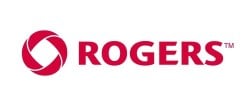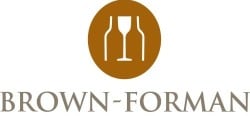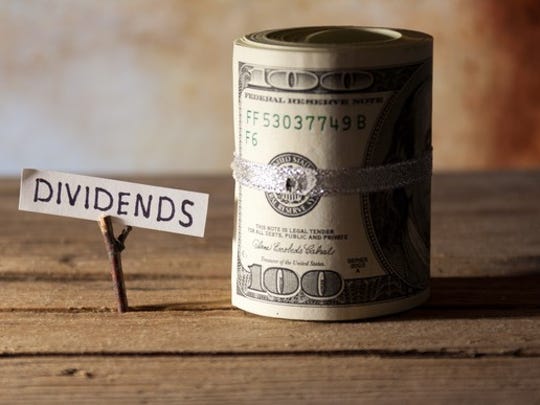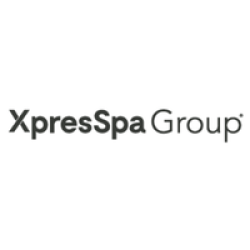This momentous occasion has been a long time coming, but Apple (NASDAQ:AAPL) officially crossed the threshold ($207.04 per share) that puts its total market cap into 13-digit territory, becoming the first U.S. company valued at $1 trillion. Technically, China's PetroChina was the first company in the world to briefly�hit a $1 trillion market cap back in 2007 before losing roughly 80% of its value since.
Amazon.com had been closing the gap in recent years, with the e-commerce giant's stock posting strong gains as it continues to grow and expand into more and more markets, but Apple's strong fiscal third-quarter earnings release earlier this week helped propel the Mac maker's shares higher, as investors cheered strong guidance and accelerating revenue growth.

AAPL Market Cap data by YCharts.
Cheap at $1 trillionWhile $1 trillion in market valuation is an awful lot of money, it's worth noting that Apple remains incredibly cheap relative to its earnings power. The Mac maker has long traded at a discount to the S&P 500, and still does. Here's how Apple's valuation metrics compare to the broader market as well as some large tech peers.
| S&P 500 | 24.3 | 2.2 |
| Apple | 17.5 | 3.7 |
| Amazon.com | 249.7 | 3.2 |
| Alphabet | 33.1 | 6.9 |
| | 23.7 | 10.3 |
| Microsoft | 28.1 | 6.5 |
Data sources: Multpl.com and Reuters.
Relative to its earnings power, Apple is the cheapest among its peers by a meaningful margin.

CEO Tim Cook holding the billionth iPhone. Image source: Apple.
How buybacks affect Apple's market capIncredibly, Apple has repurchased a mind-boggling $219.6 billion worth of its stock since kicking off its capital return program nearly six years ago. These repurchase activities have significantly accelerated in recent quarters following tax reform.

Data source: SEC filings. Chart by author. Calendar quarters shown.
These buybacks have been conducted at various share prices over the years, but the company has now retired over (split-adjusted) 1.7 billion shares outstanding relative to its peak of shares outstanding in 2013.

AAPL Shares Outstanding data by YCharts.
At current prices, those 1.7 billion shares would be worth $360 billion. Of course, it's not that simple. Apple's buybacks are so massive that the repurchases are highly accretive to earnings, allowing net income to be distributed across fewer shares and allowing EPS growth to outpace net income growth. That helps boost Apple's stock price.
So there are opposing forces at play regarding how buybacks affect Apple's market cap: Buying back shares reduces its market cap by decreasing the number of shares outstanding, but the resulting earnings accretion helps drive prices higher.
While impressive, the reality is that a $1 trillion market cap is still a somewhat arbitrary milestone that has little bearing on the company's underlying fundamentals. Apple is the most profitable company on Earth, and long-term shareholders are getting increasingly bigger cuts of those profits.
 Rogers Communications Inc. Class B (TSE:RCI.B) (NYSE:RCI) had its target price lifted by National Bank Financial from C$68.00 to C$69.00 in a report issued on Friday morning. The brokerage currently has a sector perform rating on the stock.
Rogers Communications Inc. Class B (TSE:RCI.B) (NYSE:RCI) had its target price lifted by National Bank Financial from C$68.00 to C$69.00 in a report issued on Friday morning. The brokerage currently has a sector perform rating on the stock. Rathbone Brothers plc boosted its holdings in American Express (NYSE:AXP) by 13.8% during the 2nd quarter, according to the company in its most recent 13F filing with the Securities & Exchange Commission. The firm owned 6,012 shares of the payment services company’s stock after buying an additional 728 shares during the period. Rathbone Brothers plc’s holdings in American Express were worth $589,000 as of its most recent SEC filing.
Rathbone Brothers plc boosted its holdings in American Express (NYSE:AXP) by 13.8% during the 2nd quarter, according to the company in its most recent 13F filing with the Securities & Exchange Commission. The firm owned 6,012 shares of the payment services company’s stock after buying an additional 728 shares during the period. Rathbone Brothers plc’s holdings in American Express were worth $589,000 as of its most recent SEC filing.  Brokerages expect that Brown-Forman Co. Class B (NYSE:BF.B) will announce $760.76 million in sales for the current quarter, Zacks reports. Four analysts have issued estimates for Brown-Forman Co. Class B’s earnings. The lowest sales estimate is $752.00 million and the highest is $768.49 million. Brown-Forman Co. Class B reported sales of $723.00 million during the same quarter last year, which would suggest a positive year over year growth rate of 5.2%. The company is scheduled to issue its next quarterly earnings report on Wednesday, August 29th.
Brokerages expect that Brown-Forman Co. Class B (NYSE:BF.B) will announce $760.76 million in sales for the current quarter, Zacks reports. Four analysts have issued estimates for Brown-Forman Co. Class B’s earnings. The lowest sales estimate is $752.00 million and the highest is $768.49 million. Brown-Forman Co. Class B reported sales of $723.00 million during the same quarter last year, which would suggest a positive year over year growth rate of 5.2%. The company is scheduled to issue its next quarterly earnings report on Wednesday, August 29th.
 XpresSpa Group, Inc. operates as a health and wellness company in the United States and internationally. It offers spa services, as well as luxury travel products and accessories to air travelers. The company was formerly known as FORM Holdings Corp. and changed its name to XpresSpa Group, Inc. in January 2018. XpresSpa Group, Inc. is based in New York, New York.
XpresSpa Group, Inc. operates as a health and wellness company in the United States and internationally. It offers spa services, as well as luxury travel products and accessories to air travelers. The company was formerly known as FORM Holdings Corp. and changed its name to XpresSpa Group, Inc. in January 2018. XpresSpa Group, Inc. is based in New York, New York. UR (CURRENCY:UR) traded 10.4% higher against the dollar during the 1 day period ending at 17:00 PM Eastern on July 6th. One UR coin can currently be bought for about $0.0008 or 0.00000012 BTC on cryptocurrency exchanges. In the last seven days, UR has traded up 30.5% against the dollar. UR has a market capitalization of $0.00 and approximately $58.00 worth of UR was traded on exchanges in the last day.
UR (CURRENCY:UR) traded 10.4% higher against the dollar during the 1 day period ending at 17:00 PM Eastern on July 6th. One UR coin can currently be bought for about $0.0008 or 0.00000012 BTC on cryptocurrency exchanges. In the last seven days, UR has traded up 30.5% against the dollar. UR has a market capitalization of $0.00 and approximately $58.00 worth of UR was traded on exchanges in the last day.  NewYorkCoin (CURRENCY:NYC) traded up 12.7% against the dollar during the 24 hour period ending at 15:00 PM ET on July 5th. One NewYorkCoin coin can now be bought for approximately $0.0001 or 0.00000001 BTC on exchanges including YoBit, Crex24 and Trade Satoshi. NewYorkCoin has a total market capitalization of $8.05 million and approximately $15,458.00 worth of NewYorkCoin was traded on exchanges in the last day. In the last week, NewYorkCoin has traded 38.5% higher against the dollar.
NewYorkCoin (CURRENCY:NYC) traded up 12.7% against the dollar during the 24 hour period ending at 15:00 PM ET on July 5th. One NewYorkCoin coin can now be bought for approximately $0.0001 or 0.00000001 BTC on exchanges including YoBit, Crex24 and Trade Satoshi. NewYorkCoin has a total market capitalization of $8.05 million and approximately $15,458.00 worth of NewYorkCoin was traded on exchanges in the last day. In the last week, NewYorkCoin has traded 38.5% higher against the dollar. 


 Schwab Charles Investment Management Inc. increased its holdings in shares of Polaris Industries (NYSE:PII) by 26.4% in the 1st quarter, according to the company in its most recent Form 13F filing with the Securities & Exchange Commission. The fund owned 441,807 shares of the company’s stock after purchasing an additional 92,350 shares during the quarter. Schwab Charles Investment Management Inc. owned approximately 0.70% of Polaris Industries worth $50,596,000 at the end of the most recent quarter.
Schwab Charles Investment Management Inc. increased its holdings in shares of Polaris Industries (NYSE:PII) by 26.4% in the 1st quarter, according to the company in its most recent Form 13F filing with the Securities & Exchange Commission. The fund owned 441,807 shares of the company’s stock after purchasing an additional 92,350 shares during the quarter. Schwab Charles Investment Management Inc. owned approximately 0.70% of Polaris Industries worth $50,596,000 at the end of the most recent quarter. 
